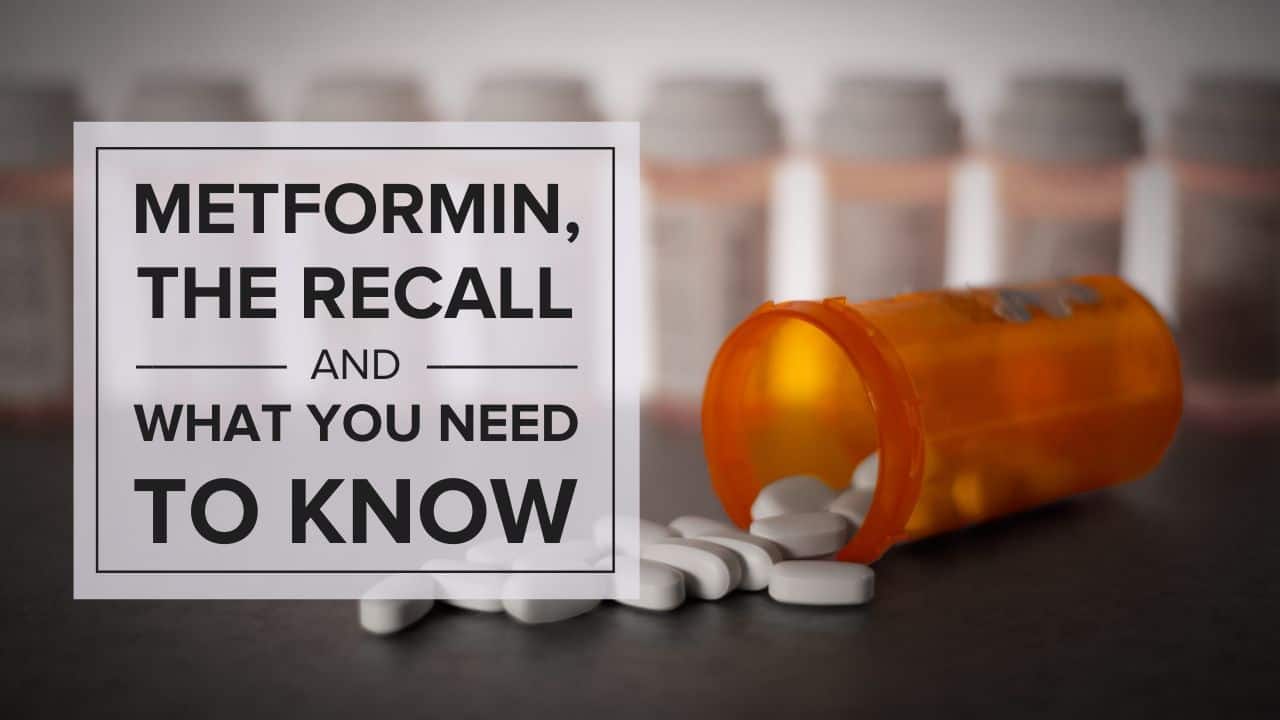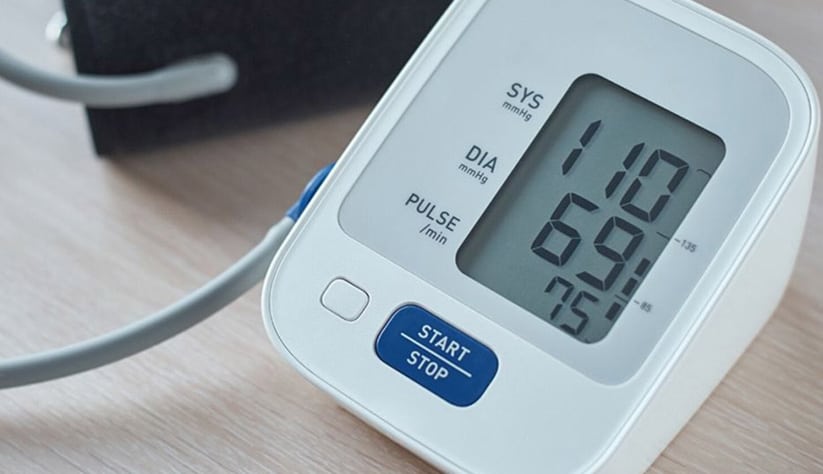
In June 2020, there were announcements about recalls of metformin and some related medications by both Apotex Corp and Amneal Pharmaceuticals. Numerous reports indicate that other manufacturers are set to potentially follow suit.
Metformin is a commonly prescribed diabetes drug for people with type 2 diabetes. To date, metformin has been considered one of the safer diabetes medications. However, tests by the U.S. Food and Drug Administration (FDA) found n-nitrosodimethylamine (NDMA) contamination in some common metformin products, which led to the recalls.
NDMA contamination is a cause of concern because it is a suspected carcinogen. Drug manufacturers are required to ensure that NDMA levels are below safe benchmarks in order to ensure safety for customers.
This article will examine the whole picture surrounding metformin. We’ll explain the drug, how it works, its benefits, and how metformin is traditionally used and prescribed.
We’ll also explore what the scientific community knows (and doesn’t know) about the side effects of metformin use.
In addition, we’ll also explain why manufacturers recalled metformin – and why these recalls may be just the beginning of more recalls in the future.
Finally, we’ll explain a science-backed natural alternative to metformin that is significantly more powerful at improving your insulin sensitivity, helping you lose weight, and reduce your dependence on other oral medications as well.
What is Metformin?

Metformin was originally extracted from French lilacs, and has been used as a medication to lower blood glucose for almost 60 years. Over time, metformin has been successfully synthesized in a laboratory, and is now commonly used to lower blood glucose for people living with type 2 diabetes.
Favored for its lack of hypoglycemic side effects, metformin is widely recommended as a safe, cost-effective first-line treatment for many conditions, including prediabetes, type 2 diabetes, polycystic ovarian syndrome (PCOS), and gestational diabetes.
As we will discuss later in this article, research indicates that metformin may actually reduce your risk for cardiovascular disease, especially in obese patients. For this reason, metformin is considered a safe and effective first-line treatment.
Common brand names for metformin in the United States include:
How Does Metformin Work?
Metformin has multiple mechanisms of action, which affect different tissues in various ways. The medication mainly interacts with your small intestine, liver, and muscle.
In your small intestine, metformin acts by reducing the rate of glucose absorption into your blood. This reduces the net amount of glucose that enters your blood from food, which helps to reduce your blood glucose values following a meal.
Patients with type 2 diabetes often suffer from increased endogenous glucose production (EGP) – the production of glucose by the liver. Reducing the rate at which your liver exports glucose into the blood is a very effective strategy to prevent unwanted blood glucose elevations.
Metformin acts by reducing the rate at which your liver exports glucose into circulation, thus decreasing the rate of EGP. By reducing EGP, less glucose enters your blood from your liver, contributing to a lower blood glucose value.
In your muscle, the action of metformin is not fully understood. Despite this, scientists have observed that metformin treatment results in the activation of an intracellular low-energy signal known as AMPK, which promotes an increased uptake of glucose from the blood.
Metformin comes in both immediate-acting and time-release tablets, which can be prescribed depending on your particular needs.
Metformin Dosages: High, Low and “Normal”
Metformin is usually prescribed in smaller doses twice a day, or in a single, larger dose to be taken with food.
The “typical” starting dose of metformin is 500mg twice a day, or 850mg once a day taken with food. A common practice is for doctors to begin at this dose, and then increase by 500mg per week over the course of a few weeks as necessary.
The recommended maximum daily dose of metformin 2500mg per day.
Metformin for Diabetes: The Good, Bad and Ugly

Metformin is prescribed to almost 120 million people with type 2 diabetes because it is considered the safest and most effective first line of treatment.
However, like many medication-based treatments for type 2 diabetes, metformin treatment suffers from a low adherence rate. In fact, one study found the adherence rate to metformin treatment to be lowest among similar medication-based treatments.
One possible explanation for this generally low adherence rate is the presence of negative side effects associated with metformin. These negative side effects can include:
What Else is Metformin Used For?

In addition to its effects on glucose production, metformin is also being studied as a treatment for cardiovascular diseases, high blood pressure, tumor prevention, and polycystic ovarian syndrome (PCOS) treatment, among others.
One study reported promising data that might link metformin with the prevention of coronary artery disease (CAD), independent of diabetes.
Other research has found a correlation between metformin treatment and lower blood pressure, although recent studies suggest this is a secondary result of metformin’s primary purpose to lower blood glucose.
Many more of these secondary effects are still being researched. One study has shown that metformin has promise in the areas of antitumor, antiaging, cardiovascular protection, neuroprotection, and the treatment of PCOS.
Is Metformin Safe?
When correctly prescribed and taken as directed, metformin tends “to be safer, and certainly no worse, than other treatments for the management of DM2 (type 2 diabetes) in older adults.”
There are cases where metformin has had negative side effects or caused sickness.
However, in many instances, these issues stemmed from allergic reactions to inactive ingredients, or reactions between multiple medications taken together.
Still, you should always be aware of the active and inactive ingredients with any medications, and understand how they will react both with your body and other medications.
Are There Other Known Side Effects of Metformin?
The most common side effects of metformin use include gastrointestinal problems including:
If you are suffering from any of these symptoms and are using metformin, communicate these side effects to your doctor immediately.
In rare cases, metformin can also cause a condition called lactic acidosis, with symptoms that may include dizziness, severe drowsiness, muscle pain, tiredness, chills, blue or cold skin, fast or difficult breathing, slow or irregular heartbeat, stomach pain with diarrhea, nausea and vomiting.
Lactic acidosis is not common in patients taking metformin, and often occurs in patients with pre-existing medical conditions that came before metformin use.
In non-diabetic patients, lactic acidosis is associated with infection, cancer, liver failure, and renal failure. In patients with type 2 diabetes, lactic acidosis is strongly associated with heart failure. Scientific evidence demonstrates that the most common causes of lactic acidosis are sepsis, liver disease, and respiratory failure.
Metformin typically does not cause hypoglycemia (low blood glucose). However, low blood sugar can occur when metformin is taken in combination with other diabetes medications.
Hypoglycemia is most common when metformin is used with medications that stimulate beta cells to secrete insulin, known as sulfonylureas.
Allergic reactions to metformin are rare. However, you may experience adverse side effects as a result of:
The Metformin Recall: Why It Happened, and What's the Risk?
The metformin recall happened because several brands of the drug were found to contain n-nitrosodimethylamine (NDMA) in higher levels than accepted by the FDA.
This contamination was first discovered in metformin brands by Apotex Corp. Later, NDMA contamination was found in seven lots of the time-release Metformin Hydrochloride Extended Release Tablets by Amneal Pharmaceuticals.
The FDA classifies NDMA as a probable human carcinogen (cancer causing agent), and sets standards for the maximum amount of the contaminant allowed in any medication. The most recent recall was voluntary, by Amneal Pharmaceuticals, to ensure that all lots are below the acceptable limits by the FDA.
NDMA contamination typically happens when medications containing metformin are produced in a laboratory environment. Cross-contamination can occur during the manufacturing process, and NDMA can also be introduced as a byproduct of the chemicals used to make a specific medication.
Alternatives to Metformin
If you’re looking to switch brands, there are a number of different medications that include metformin that you can discuss with your doctor.
There are also ways to combat the underlying causes of insulin resistance (the cause of prediabetes and type 2 diabetes) through small changes in your diet and lifestyle.
For example, Lucie was able to significantly lower her metformin dose simply by changing her diet, after having lived with type 2 diabetes for more than 2 years.
David’s transformation was even more drastic – he was able to lose 75 pounds, lowered his LDL cholesterol by 33 mg/dL, dropped his A1c by 4.0%, and was able to eliminate his 2000mg metformin dose completely simply by adjusting the way he ate.
Both achieved these changes using the Mastering Diabetes Method – the most effective science-backed method to reverse insulin resistance using low-fat, plant-based, whole-food nutrition.
The Mastering Diabetes Method has helped more than 50,000 people take back control of their lives, with smarter treatment, lower blood glucose, better cholesterol, more energy throughout the day, and less dependence on medications like metformin.
Lower Your A1c and Fasting Blood Sugar... Guaranteed

Your results are guaranteed. Join more than 10,000 ecstatic members today
Personalized coaching puts you in immediate control of your diabetes health, helps you gain energy, improves your quality of life, and reduces or eliminates your meds.
Other Articles You Might Like...
+ References
Leave a Comment Below
Are you taking metformin or other oral medications to control your blood glucose? Tell us what medications you're using below.




